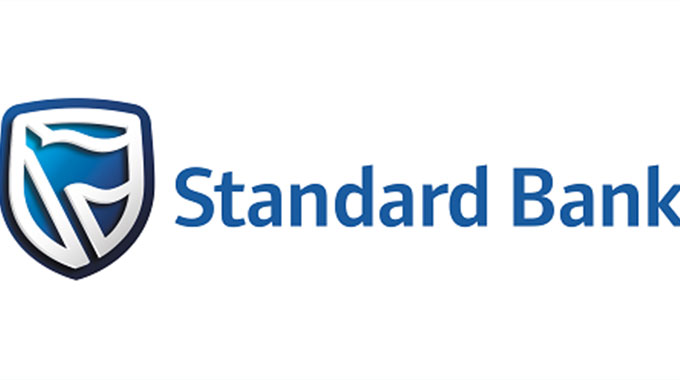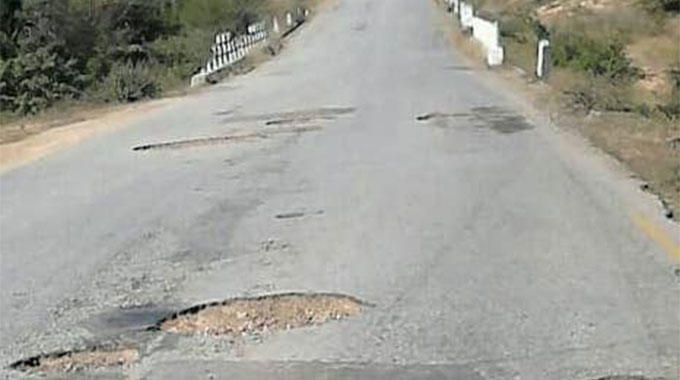Agriculture innovation being driven by digital intelligence

Prosper Ndlovu, Business Editor
WITH almost all available arable land in the Americas, Europe and Asia already productively farmed using the most developed agricultural techniques, Africa presents a major opportunity to meet the 70 percent increase in global food demand expected by 2050, according to Standard Bank Group.
Given that Africa has 60 percent of the world’s uncultivated arable land, adoption of intelligent use of data enabled by new digital technologies would boost yield per hectare in a big way, says the bank.
At the moment Africa uses predominantly traditional small-scale farming techniques and this brings the lowest yield per hectare globally, especially among the cereals and pulses that underpin the foundations of global food security.
The Stanbic Bank Zimbabwe’s parent company, Standard Bank Group, is championing a cause anchored on the use of new digital technologies to boost agricultural yields across African countries. The bank’s head of agribusiness for Africa, Abrie Rautenbach, says while fertiliser usage has improved, agricultural cultivation and livestock practices as well as better seed (biotech) can help improve yields.
He however said the biggest opportunity within the grasp of Africa lies in ‘agritech and the intelligent use of data enabled by new digital technologies. In short, the excitement and the opportunity for African agriculture is in the data.
“Information is the key to realise Africa’s vast agricultural potential. Digital technologies are merely the tools that will deliver the information,” says Rautenbach. The question is what technologies are most appropriate to supply Africa’s largely small-scale, poorly-capitalised, infrastructurally-underdeveloped and climatically-challenged farmers to transform yields?
Standard Bank’s satellite hosted-remote sensing innovation is delivered in partnership with service provider RHIZA Africa and backed by Origin Enterprises PLC and the European Space Agency.
“For the farmer and agronomist, Contour is an aggregated remote sensing information platform with a complete suite of farm monitoring tools for farmers, whereas GRID is a digital service for financial partners and farmers that helps them grow together,” says Danie Swart, general manager for RHIZA Africa.
Using algorithms to analyse and interpret images, Contour and Grid share data on local weather, soil moisture, field accessibility and leaf wetness while also providing optical satellite monitoring of area planted, germination and growth progress. This enables growth stage assessments, yield prediction and ultimately yield-enhancement. Normalised difference vegetation index (NDVI) can be easily assessed with an easy-to-use traffic light system from red to green for no biomass to high biomass readings. Available on mobile and desktop, Contour is a digital platform and mobile app providing precision farming tools enabling customer creation, field mapping, agronomic planning and recording and crop and input allocation.
“Clients can use the information to understand the health of a crop, do fertiliser and spray planning, identify flooded areas and understand ground conditions such as soil health and moisture levels as well as monitor historical weather,” says Mr Swart.
The data that Contour provides clients enables farmers to make better decisions while mitigating risks and improving yield through optimised operations. Through soil sampling, farmers can also understand in-field conditions and apply inputs to accommodate the specific needs of the soil requirements using fertilisers and lime.
This ‘agritech’ innovation allows farmers and Standard Bank to monitor crop performance on all sizes of farms and fields in all geographic regions. Both Contour and Grid also provide monitoring on an aggregated basis across regions, enabling portfolio tracking on total hectares under a specific crop and total tonnes of inputs used.
Contour and Grid provides affordable data, weekly, in real time, on crop performance. Able to collect data in all weather conditions, Origin Enterprises PLC is also developing an African crop growth index for maize, soya, wheat and other crops to provide greater performance predictability over time.
“It is important for Standard Bank to be able to assist farmers to improve yield through relevant information that can provide a view on plant health or development issues with a specific crop,” says Mr Rautenbach.
The weather module, which includes a nine-day weather forecast, for example, is invaluable for making crop-enhancing decisions around planting time.
“These technologies ensure that the crop is protected and, from a bank perspective, allows any yield (and thus income) increases to be used for either credit repayment or expansion of the agricultural business,” he adds.
Similarly, if agronomists or the extension officers of agricultural aggregators dealing with small-scale farmers are able to receive digital information on soil moisture, fertility and type, historical rainfall patterns and yield per hectare, or if they are able to identify pests and diseases remotely, they can assist small scale farmers to increase yield, boost income, access more capital and equipment, expand the area under cultivation or even identify new markets.
While this information is of huge value in driving the efficiency and productivity of individual farmers, Contour and Grid also enables the bank to identify which fields in a farming area are the best performing. While this allows the bank to asses budgeted against actual yield predictions, it also allows the bank to aggregate this information across wide areas – and work this back to the portfolio of clients that we are supporting.
Contour and Grid also enables Standard Bank to manage the financial risks associated with delivering agricultural finance. Real time visibility of crop performance affords constant updates of all Standard Bank agricultural clients and potential clients, including detailed information on crop development. This builds trust and transparency between the bank and customers, empowering farmers and enabling the bank to correctly assess risk and accurately allocate capital and cover.
Beyond this, however, “information can also inform appetite,” says Mr Rautenbach. For example, if banks and agricultural equipment sellers, know what, of how much, is planted when and where, banks can extend loans, predict income, manage risk and insurance. “Similarly, agricultural suppliers can target informed equipment or irrigation product offerings, at the correct time, to the right farmers at the right price,” he says.
While the current technology appears sophisticated, it is very easy to use. “As our experience in Africa has shown, there is a big opportunity for small-scale farmers in out-grower programmes supplying large corporates. The corporate that has signed up for the service simply opens the service to all their small-scale suppliers who are then easily able to access all the information required via their mobile phones,” says Mr Rautenbach.
Even without changing existing value chains in Africa, merely having more and accurate information on what is going on in these chains, presents an immediate opportunity to service, fund, support, risk-manage and supply Africa’s small-scale farmers with a range of services, insights and networking opportunities. From the farmer’s perspective, “the data will dramatically increase yield and boost off take while enriching the efficiency and relevance of Africa’s entire agricultural supply and value chains,” says Mr Rautenbach.
In Zimbabwe a pilot project was run last year, which signed up 8 520ha and there is constant engagement with the local RHIZA team during visits to farms to retrain customers on usage.










Comments